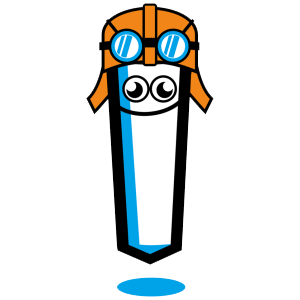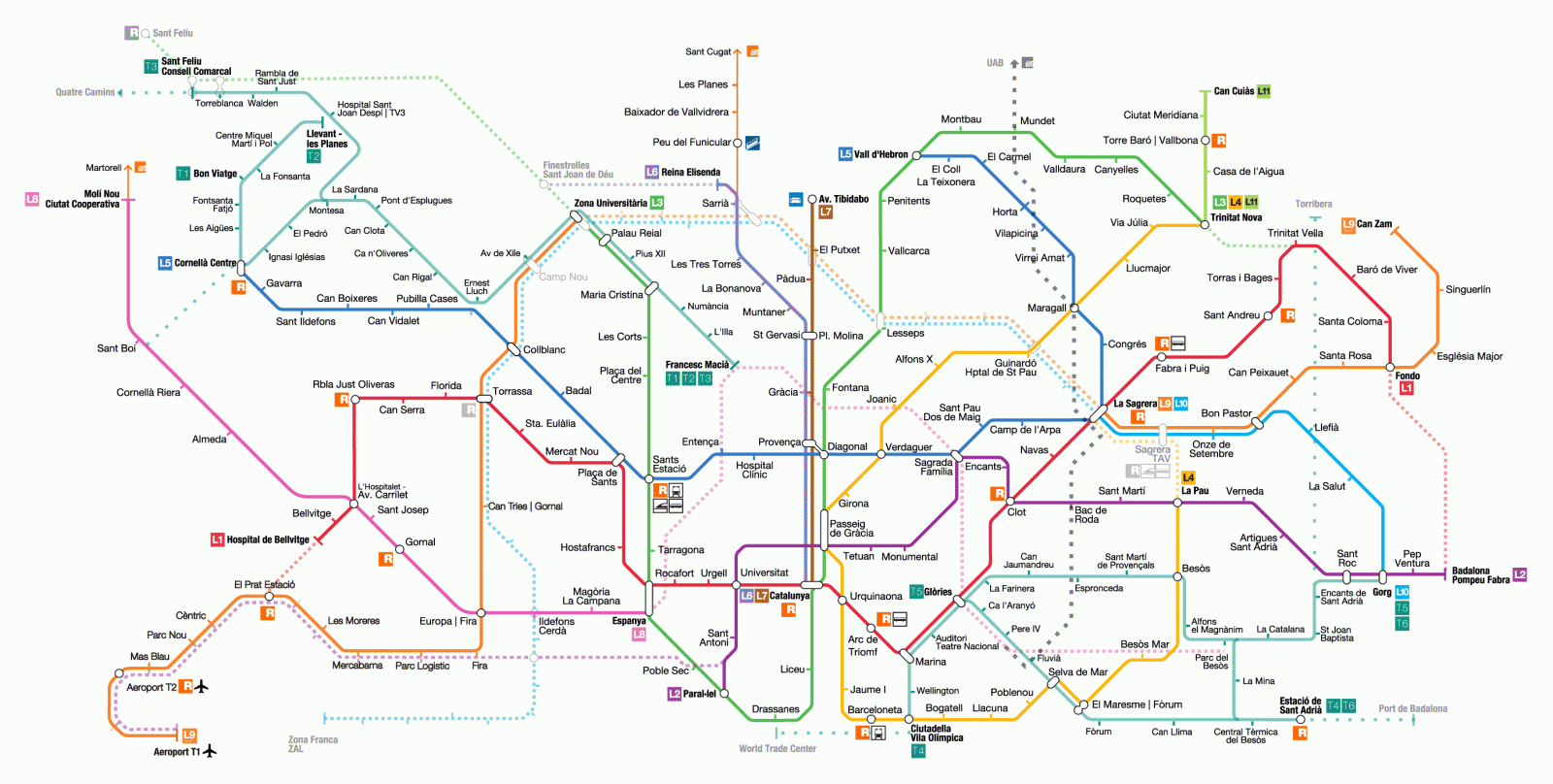Transportation:
There are many different ways to get around Barcelona via public transportation, including metro, buses, night buses, the FGC railway, and the RENFE train system.
1. Metro
The metro takes you nearly anywhere you want to go in the city. It’s fast, clean, and reliable. It opens from 5 a.m. to midnight. On Fridays, it stays open until 2 a.m., and on Saturdays, it runs all night. The nearest metro stop to ESADE’s Pedralbes campus is Maria Cristina (about a 15-minute walk away).
2. Bus
Barcelona has an extensive network of buses. The 78, 63, 75, 22, and 64 buses provide service to near ESADE (they’ll leave you about a 5-minute walk away). For more information about Barcelona’s public transportation services, visit here! The Transports Metropolitan de Barcelona (TMB) also have a free app you can download to help you get around the city.
3. FGC Railway
The FGC is the local commuter railway system. While the metro moves travelers throughout the city, the FGC connects them with nearby cities like Sant Cugat with just a few stops in Barcelona itself. The closest FGC stop to ESADE is Reina Elisenda (about a 10-minute walk). You can access FGC Railway here!
4. Taxi
Taxis can be a quick way to get around the city if you’re not traveling at rush hour. The fare to ESADE from Plaça Catalunya runs around €15.
Flying Chalks tip: The metro is generally the quickest and most comfortable way to get around Barcelona. Depending on how often you ride, it will probably work out cheaper to buy a multi-trip pass than buying single tickets (you can compare prices here!). The T10 card that offers 10 trips is a popular option. Consider purchasing a monthly or longer-term pass if you take the metro frequently
Banking services:
Spain is notorious for being heavy on bureaucratic procedures and the banks are no exception. It’s easiest to set up a bank account in person, keeping in mind that banks generally only open from 9 a.m. to 2 p.m.
To open a bank account, you will need a NIE – an identity number assigned to foreigners – as well as proof of identity (like a passport), proof of address, and proof of employment or activity status (a student card counts). If you have documents that aren’t in Spanish, you may need them to be officially translated and authenticated with an Apostille stamp. Check the official Apostille website to find information about how to do this in your country here!
Some banks offer free bank accounts to under 30s. Many charge some type of maintenance fee per year for having your account there, though you may be able to avoid this if you choose to have online only banking.
Flying Chalks’ tip: Doing bank transfers is a common way to pay things like rent or pay people back, though transfers can take a few days to go through. If you don’t speak much Spanish, you may want to get a Spanish-speaking friend to go with you for banking-related procedures, or try going to a large bank in the city center with English-speaking staff to open your account.
Major Banks in Spain:
The two largest banks in Catalonia are La Caixa and Caixa Catalunya. BBVA, Santander, and Bankia are among the largest banks across Spain.
Flying Chalks’ tip: The nearest bank to ESADE’s campus is Banco Santander, which has a few locations within walking distance, making it a convenient choice for many ESADE students.
Post office services:
The Spanish post office ("Correos") has over 6,000 offices across Spain, so chances are there'll be one near to you. Find the post office nearest to you by going to the Correos website. Click on "Welcome" in the upper left-hand corner to see the English version. There is a "Tools" section on the homepage that includes a post office locator based on postcodes. (If you aren't sure what your postcode is, put your address into Google Maps and it should come up).
If you need to send mail, you can buy stamps from either the official Correos office or a tobacco store. Post your mail from a Correos office or a yellow Correos post box. Use the "localizador de buzones" on the official website to find a post box near you.
When addressing post to be sent to Spain, the sender should write your name and address like this:
- Line 1: Name
- Line 2: Street, building number, and apartment number
- Line 3: Post code and town
- Line 4: Province
If you are sending or receiving international post, you might have to fill out a customs form. The Spanish postal service allows you to send up to 20 kilos anywhere in the world.
Flying Chalks’ tip: Many post offices in Spain use a ticket number system, so you may need to take a number instead of queuing. Also, to pick up a parcel from the post office, you may be asked to show I.D (take your passport or national identity card, if you have one with you). Keep in mind that many post offices close during the "siesta” hours (break hour from about 1pm to 4-5pm) and on Saturday afternoons, especially in smaller towns. All offices are closd on Sundays. If you have any questions, contact customer service at +34 902 197 197 or consult the Correos website. Much of the website is available in English (though not all of it).
Medical Services:
You must have medical insurance to participate in the ESADE program. This will grant you access to medical services in Spain, though it will depend on the type of insurance you choose. Consult your provider beforehand, though in general medical services are easily accessible.
On campus, you can find an optician and a pharmacy. The pharmacy opens from 10 a.m. to 3 p.m. and again from 5 p.m. to 7 p.m. It is closed on weekends. For emergencies, go to the hospital nearest you. For non-urgent medical care, go to a CPA (Center for Primary Attention). In both cases, where you need to go depends on where you live.
Consult the CatSalut (the health care system for Catalonia) website. To find hospitals, select “urgencias medicas”. For clinics, select “centros sanitarios”. In both cases, you’ll be prompted to enter your address.
AngloInfo has a great resource in English regarding medical care in Barcelona. CatSalut also has information for medical care for foreigners and you can access that information here!
Telecommunications:
SIM cards are easy to get in Spain – just show up to a store, buy one, and you can use it right then and there. Some of the larger companies include Vodafone, Movistar, Jazztel, and Telefonica. We also recommend considering Pepephone, as they offer good deals on cellphone and data services.
Most Spanish students use either pay-as-you-go or monthly fee plans rather than contracts. You will probably want to purchase a data plan; although Barcelona has city wi-fi, it doesn’t cover the entire city.
Weather:
The weather is fairly mild throughout the year in Barcelona. The rainiest months of the year are in spring and early autumn. Summers are warm, and the weather stays good through the end of October or early November.
Flying Chalks' tip: Though the winters aren’t particularly cold by most places’ standards (snowfall is very unusual), you will want a decent coat.
Here’s the range of average high and low temperatures in Barcelona throughout the year:
January | 14° high, 5° low |
February | 14° high, 6° low |
March | 16° high, 8° low |
April | 18° high, 10° low |
May | 22° high, 14° low |
June | 26° high, 18° low |
July | 28° high, 21° low |
August | 29° high, 21° low |
September | 26° high, 18° low |
October | 23° high, 14° low |
November | 18° high, 9° low |
December | 14° high, 5° low |
IMPORTANT NUMBERS (if students can only speak English) | |
Emergency services | 112 |
Police | 092 |
Ambulance | 061 |
Emergency locksmith | 933 238 507 |
City information (calling from Barcelona) | 010 |
City information (calling from outside Barcelona) | 807 117 700 |


